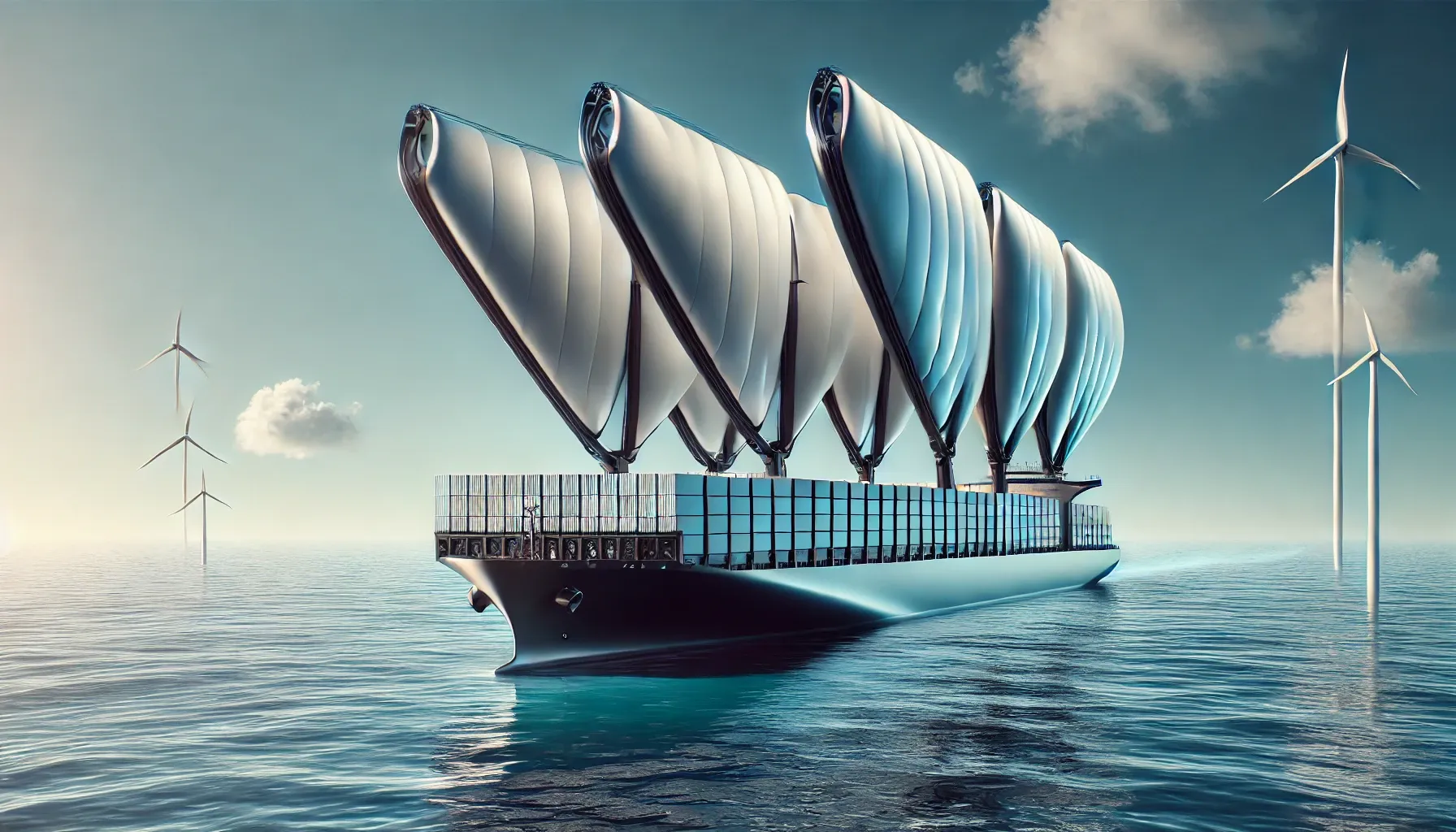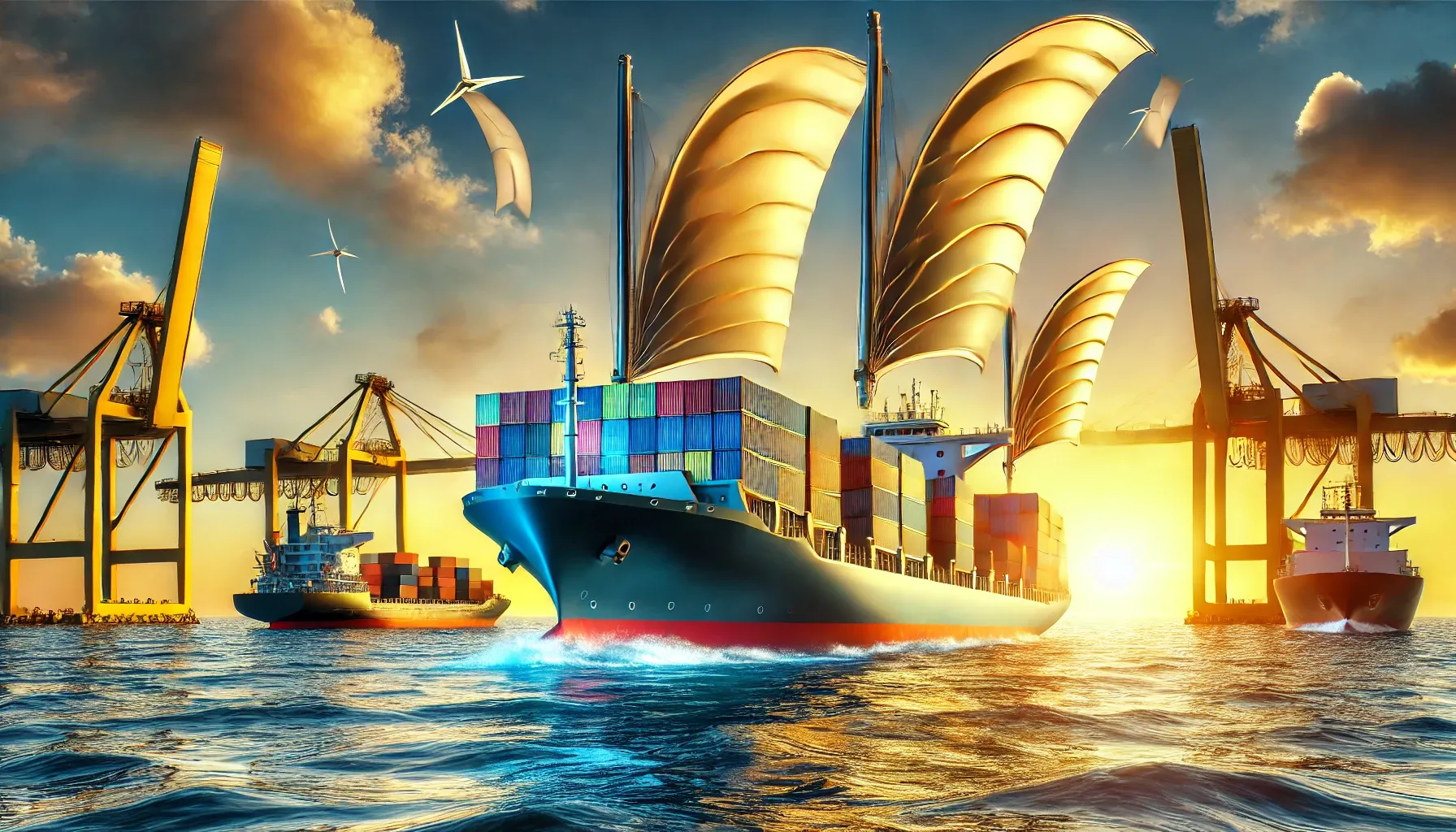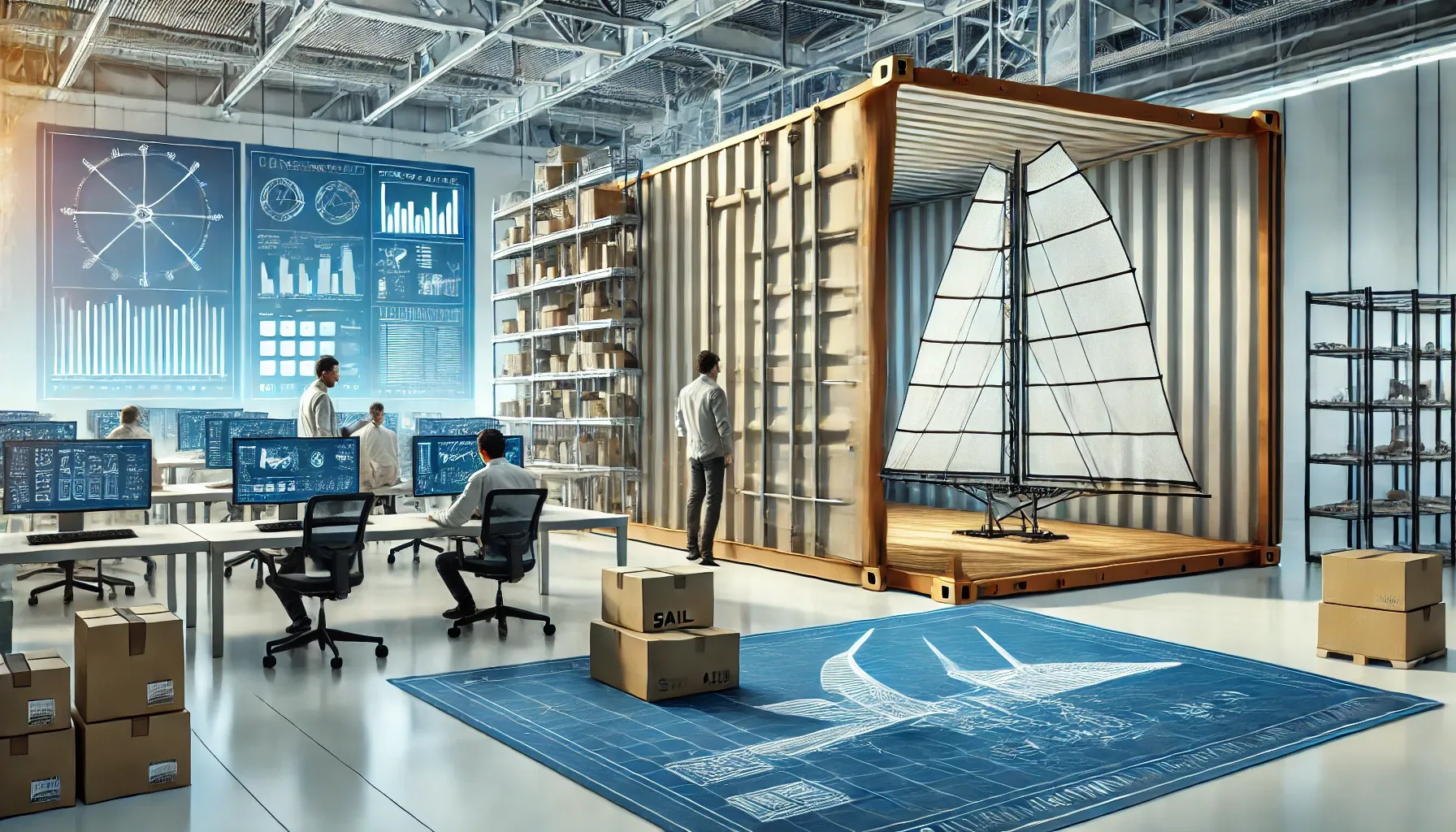OutSail Shipping: Revolutionizing Maritime Freight with Containerized Sails
The shipping industry faces a pressing challenge due to new emissions regulations imposed by the International Maritime Organization. In response, shipping lines are exploring ways to reduce emissions and operating costs. OutSail Shipping, a start-up founded in 2022, aims to address these challenges by introducing containerized sails for cargo ships. In this article, we will delve into the innovative solution offered by OutSail Shipping, highlighting its advantages and potential impact on the shipping industry.

The Current State of the Shipping Industry
The shipping industry plays a vital role in global trade, but it is also a significant contributor to greenhouse gas emissions and air pollution. Maritime shipping burns a staggering 300,000,000 tons of fossil fuels annually, resulting in approximately 3% of global greenhouse gas emissions and 60,000 pollution-related deaths per year. Additionally, fuel expenses can account for up to half of the operating costs for cargo ships, which have been rising and are projected to continue increasing in the coming decades.
Furthermore, with shipping demand expected to double by 2050, it is evident that current steamship lines lack viable plans to decarbonize their operations. The industry requires an innovative solution to reduce emissions, minimize costs, and meet the growing demand for maritime transportation.
The Innovative Solution - Containerized Sails
OutSail Shipping proposes a groundbreaking solution to address the challenges faced by the shipping industry. By leveraging wind energy, OutSail aims to revolutionize maritime freight and create a more sustainable future. The company's product is a high-performance wing sail that can be installed as easily as a standard shipping container, offering a plug-and-play solution for cargo ships.
Traditional wind-assist devices have faced limitations, including their inability to fit on container ships and their limited performance at speeds exceeding 12 knots. Retrofitting existing vessels with these devices also incurs significant costs. However, OutSail Shipping's containerized sails overcome these obstacles, enabling shippers to save up to 20% of their fuel consumption without the need for expensive retrofitting.
Meet the Founders of OutSail Shipping
OutSail Shipping is spearheaded by a team of experienced engineers with impressive backgrounds in the aerospace and automotive industries. The founders of OutSail Shipping include:
Arpan Rau - Founder and CEO:
Arpan Rau brings his expertise as a Systems Engineer and Product Manager, gained from serving prominent organizations such as SpaceX, Relativity Space, Momentus Space, Impossible Aerospace, and Nuro. With a passion for moving maritime freight economically using wind power, Rau is dedicated to transforming the shipping industry.
Joseph Oorebeek - Aerodynamics Specialist:
Joseph Oorebeek is an aerodynamics expert with extensive experience in supersonics, hydrodynamics, automotive, and aerospace engineering. He combines experimental fluid-dynamic studies with simulation tools to develop innovative solutions to complex problems. Oorebeek's multidisciplinary approach ensures the development of a high-quality product design.
Bailey Da Costa - Chief Engineer:
Bailey Da Costa, the co-founder and Chief Engineer of OutSail Shipping, previously held senior positions as an Electrical Engineer at Impossible Aerospace and Aeye. Da Costa's expertise in building devices from the ground up and providing meticulous care to systems ensures the development of reliable and efficient wind-powered container ships.
OutSail Shipping's Vision and Launch
OutSail Shipping is driven by a clear vision: to design, build, and operate purely wind-powered container ships that decarbonize maritime shipping while simultaneously reducing costs. With thousands of years of maritime history as evidence, wind has proven to be a reliable and sustainable energy source. By combining historical knowledge with modern advancements in forecasting and fluid dynamics, OutSail Shipping aims to usher in a new era of environmentally friendly and economically viable maritime freight transportation.
To kickstart its mission, OutSail Shipping plans to launch its first service, a container liner operating between the US West Coast and the state of Hawaii. This strategic choice places them in direct competition with the existing $200 million ocean-going barge market. By offering a faster transit time and lower prices, OutSail Shipping aims to capture a significant share of this market segment and demonstrate the commercial viability of its wind-powered container ships.

Advantages of Containerized Sails
OutSail Shipping's containerized sails offer numerous advantages over traditional wind-assist devices and retrofitting options:
Easy Installation: The containerized sail is designed to be installed seamlessly, just like a standard shipping container. This plug-and-play solution eliminates the need for costly and time-consuming retrofits, making it highly convenient for shipping companies.
Fuel Efficiency: By harnessing wind power, OutSail Shipping's containerized sails enable cargo ships to reduce their fuel consumption by up to 20%. This translates to significant cost savings and a considerable reduction in greenhouse gas emissions.
Versatility: The containerized sails can be adapted to fit a variety of container ships, allowing shipping companies to upgrade their vessels without significant modifications. This flexibility ensures that OutSail Shipping's solution can be implemented across different fleets and ship sizes.
Performance: Unlike existing wind-assist devices that have limitations at higher speeds, OutSail Shipping's containerized sails are designed for optimal performance even at speeds exceeding 12 knots. This ensures that the sails are effective in a wide range of sailing conditions, maximizing the benefits of wind power.
Sustainability: By relying on wind energy, OutSail Shipping contributes to a significant reduction in greenhouse gas emissions. By adopting their containerized sails, shipping companies can align with global sustainability goals and play a crucial role in combating climate change.
OutSail Shipping's Impact on the Shipping Industry
The introduction of OutSail Shipping's containerized sails has the potential to revolutionize the shipping industry in several ways:
Environmental Benefits: By significantly reducing fuel consumption and greenhouse gas emissions, OutSail Shipping's solution directly addresses the environmental impact of maritime shipping. As governments and organizations worldwide focus on sustainability, the adoption of wind-powered container ships can help the shipping industry align with global climate goals.
Cost Reduction: Fuel expenses account for a substantial portion of operating costs for cargo ships. By saving up to 20% on fuel consumption, shipping companies can experience significant cost reductions. This economic advantage positions OutSail Shipping's solution as an attractive option for cost-conscious businesses in the shipping industry.
Market Disruption: The container liner service between the US West Coast and Hawaii represents OutSail Shipping's entry point into the market. By offering lower prices and faster transit times, they aim to challenge the existing ocean-going barge market, which presents a $200 million opportunity. This disruption has the potential to reshape the dynamics of maritime freight transportation and encourage competitors to explore sustainable alternatives.
Industry Leadership: With a team boasting expertise from leading companies such as SpaceX, Tesla, and Nuro, OutSail Shipping has the potential to become a leader in wind-assisted shipping. Their innovative approach, backed by a strong team and partnerships, positions them as a trailblazer in the industry, setting the standard for sustainable and cost-effective maritime freight transportation.

OutSail Shipping's Partnerships and Future Prospects
OutSail Shipping has already gained significant support and recognition within the industry. The start-up is backed by Y Combinator, a renowned startup accelerator, which provides them with valuable resources, mentorship, and access to a vast network of investors and industry experts. This partnership further solidifies OutSail Shipping's position as a promising venture with high growth potential.
Looking ahead, OutSail Shipping aims to expand its operations beyond the initial container liner service. The success of their pilot project will pave the way for collaborations with shipping companies worldwide, enabling the widespread adoption of containerized sails. With the expected doubling of shipping demand by 2050, OutSail Shipping has the opportunity to make a significant impact on the industry's decarbonization efforts.
Additionally, OutSail Shipping's innovative approach to wind-powered container ships can inspire other players in the maritime industry to explore similar solutions. By showcasing the economic and environmental advantages of their product, OutSail Shipping can influence industry-wide changes and foster a collective commitment to sustainability.
Conclusion
OutSail Shipping's containerized sails for cargo ships present a game-changing solution to the shipping industry's emissions and cost challenges. By harnessing wind power and offering a plug-and-play installation, OutSail Shipping enables shipping companies to reduce fuel consumption, lower operating costs, and minimize their environmental impact. With a team of experienced founders and the support of Y Combinator, OutSail Shipping is poised to disrupt the market and lead the way in sustainable maritime freight transportation.
As the global focus on environmental sustainability intensifies, OutSail Shipping's innovative solution has the potential to reshape the shipping industry. By combining ancient wisdom with modern technology, OutSail Shipping is driving the adoption of wind power as a primary energy source for maritime transportation. The success of their container liner service and partnerships with shipping companies will determine the company's trajectory and influence the industry's transition towards a greener future.

